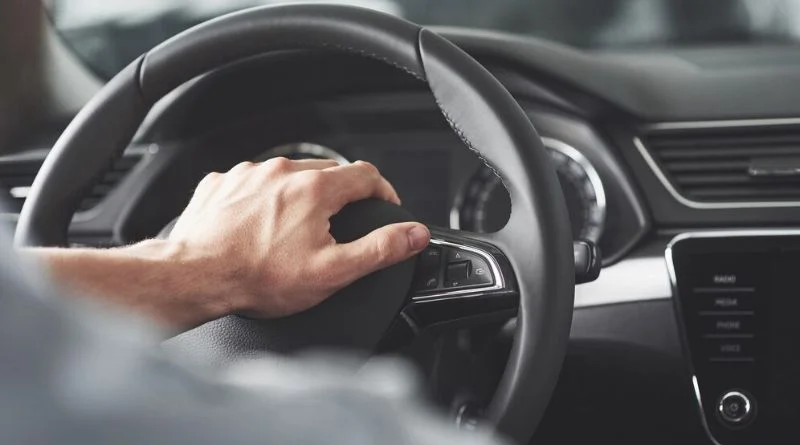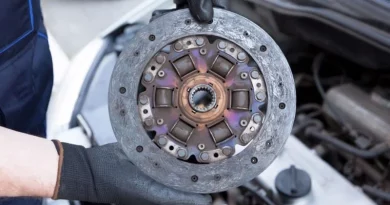The Evolution of Car Safety: Advanced Technologies Redefining Crash Protection
In the ever-evolving landscape of automotive technology, the pursuit of safer roads has been a driving force behind continuous innovation. One of the most crucial aspects of this evolution is the advancement in car safety technologies, which play a pivotal role in redefining crash protection and ensuring the well-being of drivers in the unfortunate event of accidents.
Car safety used to rely on the implementation of airbags and seatbelts primarily. While these remain critical components of crash protection, the automotive industry has witnessed a paradigm shift towards more sophisticated and advanced safety technologies. This article explores the transformative journey of car safety and delves into the cutting-edge features reshaping how we perceive crash protection.
The Rise of Advanced Airbag Systems
Airbags have been a cornerstone of car safety for decades, cushioning the impact for drivers and passengers during collisions. However, the evolution of airbag systems has taken a quantum leap. Modern vehicles now come equipped with advanced airbag systems that tailor their deployment based on various factors, including the severity of the impact, the weight and position of occupants, and even the type of crash.
These intelligent airbag systems ensure that the right airbags deploy at the right time, maximizing their effectiveness in mitigating injuries. For example, side-impact airbags have become commonplace, offering additional protection in scenarios where traditional front airbags may not be sufficient.
Pre-Collision Warning Systems
One of the key advancements in car safety tech is the introduction of pre-collision warning systems. These systems utilize sensors, cameras, and radar to detect potential collision threats and warn drivers in real time. The warnings may come in the form of audible alerts, visual cues on the dashboard, or haptic feedback, such as steering wheel vibrations.
By providing drivers with crucial seconds of advance notice, pre-collision warning systems offer the opportunity to take evasive action, such as steering away or applying brakes, thus reducing the severity of an impending crash. This technology is particularly effective in preventing rear-end collisions and has proven to be a game-changer in avoiding accidents altogether.
Collision Avoidance Technologies
Beyond warning systems, collision avoidance technologies take safety a step further by actively intervening to prevent accidents. Automatic Emergency Braking (AEB) is a prime example. AEB systems use sensors to monitor the road ahead and can automatically apply the brakes if a collision is imminent. This protects the driver and other road users, making it a critical feature in the quest for safer roads.
Moreover, lane-keeping assistance systems contribute to crash protection by preventing unintentional lane departures. These systems use cameras and sensors to detect lane markings and provide gentle steering inputs to keep the vehicle within its lane. By reducing the risk of lane departure accidents, this technology is instrumental in ensuring the safety of drivers and passengers.
Real-World Impact
The real-world impact of these advanced safety technologies cannot be overstated. Numerous studies and crash analyses have demonstrated a significant reduction in the severity of injuries and fatalities in vehicles equipped with these features. In essence, the evolution of car safety tech is translating into tangible and life-saving benefits on our roads.
Legal Implications: Understanding Your Rights
With the integration of sophisticated safety technologies, the landscape of car accident legality is also undergoing a transformation. Modern car tech, such as onboard cameras and sensors, plays a crucial role in determining fault and responsibility in the aftermath of an accident.
In many cases, these advanced systems provide invaluable data and evidence that can be crucial for insurance claims and legal proceedings. Dashcams, for example, capture real-time footage of events leading up to a collision, offering an unbiased account that can help establish the sequence of events. This can be particularly advantageous in situations where there are disputes over liability.
Furthermore, the data collected by various safety systems, such as the vehicle’s speed at the time of impact or the engagement of safety features like ABS and stability control, can serve as vital information in legal proceedings. Being aware of your vehicle’s capabilities and having access to this data can empower drivers with a clearer understanding of their rights and responsibilities in the aftermath of an accident.
Looking Ahead: The Role of Smart Technologies
As we move into an era of smart vehicles and connected ecosystems, the role of artificial intelligence (AI) in car safety cannot be ignored. AI is increasingly being integrated into safety systems, enabling vehicles to adapt to dynamic driving conditions and respond to potential risks more effectively.
Adaptive cruise control, another manifestation of AI in car safety, adjusts a vehicle’s speed in response to the flow of traffic, maintaining a safe following distance. This enhances convenience and contributes to preventing rear-end collisions, making roads safer for everyone.
The evolution of car safety has come a long way, and the integration of advanced technologies is reshaping the landscape of crash protection. From intelligent airbag systems to collision avoidance technologies and the influence of AI, vehicles are becoming not just modes of transportation but guardians of our well-being on the road. As these innovations continue to evolve, the future holds the promise of even safer journeys, ultimately making the roads a place where accidents are minimized and lives are better protected.




